Painting The Corners: Art and Inspiration
This Electronic Field Trip looks at the representation of baseball in American popular culture and art.
This Electronic Field Trip looks at the representation of baseball in American popular culture and art.
The National Polish-American Sports Hall of Fame exhibits a collection of historic artifacts at the American Polish Cultural Center in Troy, Michigan. Many of the items are one-of-a-kind. Visitors can see the uniforms worn by such greats as Steve Gromek, Carol Blazejowski, and Ed Olczyk; the boxing gloves used by the 1940s world middleweight champion, Tony Zale; and basketballs, baseballs, footballs, and bowling balls used and signed by Mike Krzyzewski, Whitey Kurowski, Ted Marchibroda, and Ed Lubanski. Among other items is a football signed by NPASHOF inductee Bob Skoronski, Vince Lombardi and many other members of the 1967 Super Bowl I Champion Green Bay Packers.
The hall offers exhibits.
The Museum of Our Industrial Heritage presents the history and social aspects of industry within Franklin County, MA. Exhibits display locally made cutlery, machine tools, hand tools, taps and dies, and other items, as well addressing the World War II home front. Collection highlights include a circa 1880 screw thread cutting machine and a circa 1920 Goodell Pratt Company lathe. The museum is located within a historic factory.
The museum offers traditional and interactive exhibits, teacher workshops, field trips, interactive outreach programs for students, and archive access. The museum is open by appointment only.
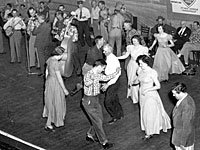
What was America's longest-running radio show?
In 1925, Nashville radio station WSM went on the air. Like many early radio stations, it was the voice of a particular commercial enterprise—in this case, the Nashville-based National Life and Accident Insurance Company, which was looking to move beyond sickness and accident insurance into life insurance. WSM program director George D. Hay, who had previously been an announcer on the Barn Dance on a Chicago radio station, organized a Saturday-night show which was also called the "barn dance." Live performances ranged from minstrel acts to military bands, but old-time or traditional string bands performing country music dominated.
The show that preceded the barn dance was a classical music program called the Music Appreciation Hour. One night in 1927 Hay introduced the barn dance by saying, "For the past hour you have been listening to music taken largely from the Grand Opera, but from now on we will present the Grand Ole Opry." The name stuck, and it continued to be broadcast under that name for the next six decades.
Although some "proper" Nashville residents thought the show was not in tune with the city's genteel reputation, it soon became wildly popular. A new radio tower built in 1932 allowed WSM to reach most of the nation with the show, although southerners remained the core of the audience. Whereas commercial media like radio have sometimes been seen as a threat to "traditional" cultures, WSM and the Grand Ole Opry spread and preserved (while it also transformed) southern white rural music.
Charles Reagan Wilson and William Ferris, eds., Encyclopedia of Southern Culture Chapel Hill, NC: University of North Carolina Press, 1989.
The Williamson County Historical Society seeks to preserve and share the history of Williamson County, Illinois. To this end, the society operates a museum of local history, housed within the 1916 jail and sheriff's residence. Rooms are set to period appearance. Settings include domestic spaces, a garment shop, a doctor's office, a country store, and a schoolroom. A military exhibit is also located on site.
The society offers period rooms, exhibits, one-hour museum tours, research library access, and research assistance. A fee is charged for research conducted on request.
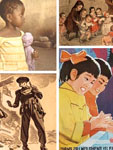
This website presents historical sources and teaching materials that address notions of childhood and the experiences of children and youth throughout history and around the world. Primary sources can be found in a database of 200 annotated primary sources, including objects, photographs and paintings, quantitative evidence, and texts, as well as through 50 website reviews covering all regions of the world. More than 20 reviews and more than 70 primary sources relate to North American history.
The website also includes 20 teaching case studies written by experienced educators that model strategies for using primary sources to teach the history of childhood and youth, as well as 10 teaching modules that provide historical context, strategies for teaching with sets of roughly 10 primary sources, and a lesson plan and document-based question. These teaching resources cover topics ranging from the transatlantic slave trade, to girlhood as portrayed in the novel Little Women, to children and human rights. Eight case studies relate to North American history, as do two teaching modules.
The website also includes a useful introductory essay outlining major themes in the history of childhood and youth and addressing the use of primary sources for understanding this history.
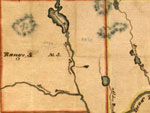
One year after the sub-prime mortgage crisis, this website presents a small collection of historical materials and information surrounding four financial crises in the 19th and early 20th century: the Panic of 1837, the Panic of 1873, the Bankers' Panic of 1907, and the Great Crash of 1929. Each section includes a brief explanation of the crisis, including causes and consequences, and between four and six primary sources, including maps, images of bank notes, title deeds, and letters. These sources highlight the complexity of crises and their increasing internationalization over time, as well as issues surrounding historical interpretation of the crises.
The website also includes sections on the Waltham Watch Company, which drew on lessons learned during the Panic of 1937 to mechanize the production of watches; and the real-estate boom of the early 1920s, which has been used recently by economists and historians to better understand current connections between real estate markets and financial crisis. Finally, a bibliography of close to 30 works on the history of these crises, links to manuscript collections, trade publications, and financial databases, give website visitors suggestions for further study.
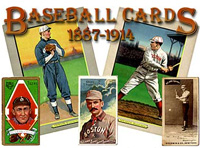
A collection of 2,100 early baseball cards, featuring more than 1,000 major and minor league players who represented teams in 13 leagues and 75 cities. Includes legendary players, such as Ty Cobb, Tris Speaker, Cy Young, and Walter Johnson, in addition to managers and owners, such as Connie Mack, John McGraw, and Charles Comiskey. Provides a nine-title bibliography. Searchable by keyword for material written on the cards, and by name, team, league, and city. Primarily of interest to sports historians, the cards, originally distributed as advertising material in cigarette packs, can also be used in the study of commercial advertising and printing processes.
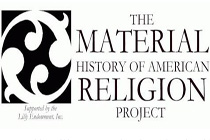
In 1996, eight historians of religion and three advisors embarked on a five-year project to illuminate ways that material culture and economic history can be used in the study of American religion, a discipline traditionally dominated by ideas. The site presents annotated photographs of 39 objects, including an evangelical coffee bar, chewing gum packed with biblical verses, artwork in a family Bible, and a church stick used to awaken sleeping congregants. Thirty-eight documents from the 1850s to the 1960s, range from an 1854 book steward report for the African Methodist Episcopal Church to a chain e-mail from the 1990s. The site also includes 23 essays and interviews by the project's participants on such eclectic subjects as "Material Christianity," religious architecture, how Catholic practice has shaped children's experiences, the role of costume in the Salvation Army, how to practice economic history of religion, and "what makes a Jewish home Jewish." Includes eight issues of the project's newsletter; a bibliography of 22 titles; and links to 18 related sites. This site will be especially valuable to university students interested in evaluating the value of material culture scholarship in religious studies, students of economic history curious about applying their discipline to non-traditional fields of inquiry, and scholars within the field of material culture and the broad discipline of American cultural history.
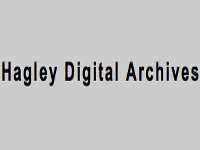
With a focus on business history and its connections to larger cultural, social, and political trends, the Hagley archive presents digital images on a range of topics, including "industrial processes; commercial landscapes; marketing and advertising; transportation facilities and methods; development of information technology; and, the social and cultural aspects of work and leisure." Pictured are bridges, dams, coalmines, and the testing and manufacturing of gunpowder and explosives, nylon, steel, railroads, automobiles, and airplanes. Also included are images of historic buildings, homes, and gardens in Delaware and Pennsylvania.
There are some images of advertisements, packaging, company brochures, trade catalogs, pamphlets, internal documents, letters, and other ephemera from various industrial enterprises. It includes, for example—under "nylon"—not only shots of machinery, product samples and images of the stages of melting and forming polymers, but also such treasures as ads and publicity shots of women modeling nylon stockings and swimsuits (including "Miss Chemistry" at the 1939 New York World's Fair), and news photos of the riotous early sales of nylon stockings.
Other topics include the early development and use of computers by Univac, IBM, and Remington Rand, aerial photos of the Mid-Atlantic seaboard; automobiles; Lukens Steel Company; ship building; and coal mining.